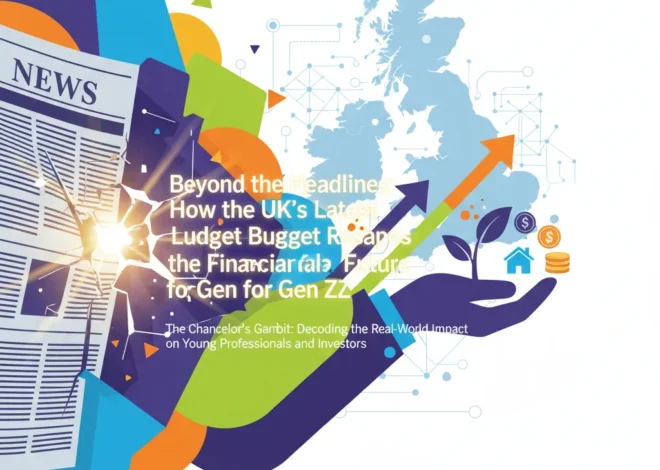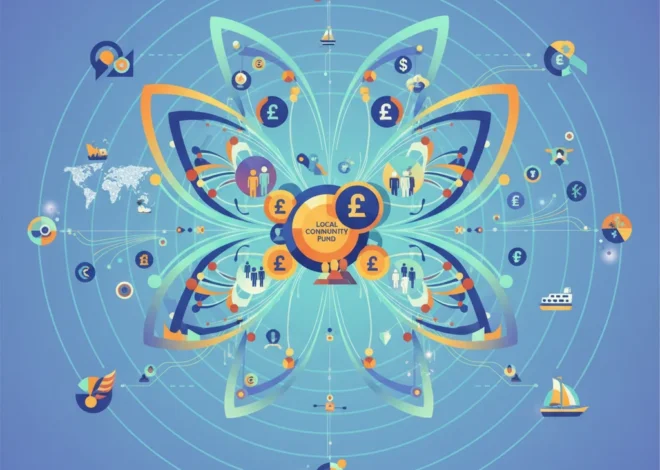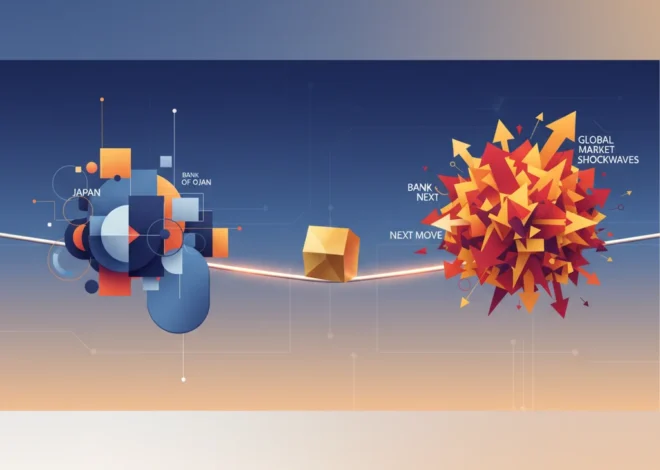
Financial Firestorms: Building a Resilient Portfolio in an Age of Unforeseen Crises
A recent tragedy in Hong Kong, where a devastating fire engulfed an apartment complex, serves as a sobering, real-world reminder of how quickly a localized event can spiral into a catastrophe of immense scale. According to reports from the Financial Times, the blaze resulted in a significant loss of life and left hundreds unaccounted for, a stark illustration of systemic failure and the high cost of being unprepared. While our thoughts are with the victims and their families, this event also provides a powerful metaphor for the world of finance and investing.
In the global economy, “financial fires” can ignite without warning. A sudden credit crunch, a geopolitical flare-up, a disruptive technological shift, or a sovereign debt default can spread with terrifying speed, threatening to burn down portfolios, destabilize markets, and erase decades of value. Are our financial systems, investment strategies, and corporate balance sheets truly fireproofed for the 21st century? Or are we living in interconnected, poorly regulated structures, waiting for a spark in one corner to cause a global conflagration?
This article explores the concept of financial resilience. We will dissect the modern tinderboxes of the global stock market, examine the innovative tools that financial technology offers for risk mitigation, and analyze how investors and business leaders can build robust strategies to not only survive the next economic firestorm but potentially emerge stronger.
Identifying the Tinderboxes: Mapping Risk in the Modern Economy
Just as an old building might have faulty wiring, the global financial system has its own latent vulnerabilities. Identifying these “tinderboxes” is the first step in effective risk management. Today’s economy is a complex web of interconnected risks, where a problem in one sector can create a domino effect across the entire system.
Geopolitical Instability and Supply Chain Fragility
The era of predictable, globalized trade is facing significant headwinds. Tensions between major economic powers, regional conflicts, and rising protectionism create an unstable environment for international investing. A single trade dispute or military action can sever critical supply chains, sending shockwaves through the stock market and impacting corporate earnings across the globe. We saw this during the COVID-19 pandemic, where reliance on single-source suppliers led to massive disruptions. This fragility remains a core risk, with recent data showing that supply chain disruptions have cost businesses an average of 45% in annual revenue (source).
Inflationary Pressures and Monetary Policy
Central banking institutions worldwide are walking a tightrope. After years of low interest rates, the fight against inflation has forced aggressive monetary tightening. This creates a high-stakes environment for the economy. Higher interest rates can cool an overheating economy but also risk triggering a recession, increasing borrowing costs for corporations, and devaluing long-duration assets in investment portfolios. The delicate dance of managing inflation without crippling economic growth is a primary source of market volatility and a key area for investors to watch.
Corporate Debt and Leverage
In the low-interest-rate environment of the past decade, corporations took on staggering amounts of debt. While leverage can amplify returns in good times, it becomes an anchor during a downturn. Companies with high debt-to-equity ratios are particularly vulnerable to economic shocks. A slowdown in consumer spending or an increase in financing costs can quickly lead to defaults, layoffs, and even bankruptcy, creating contagion that can spread through the banking sector and the broader stock market.
The Price of a Masterpiece: Unpacking the Economics of Basic Income for Artists
The Digital Fire Brigade: Fintech’s Role in Modern Risk Management
While the risks are significant, so are the tools we have to combat them. The rise of financial technology (fintech) has equipped investors, traders, and institutions with a sophisticated arsenal for identifying, monitoring, and mitigating risk in real-time.
AI-Powered Predictive Analytics
Gone are the days of relying solely on historical data and quarterly reports. Modern fintech platforms leverage artificial intelligence and machine learning to analyze vast datasets—from market trading patterns and macroeconomic indicators to social media sentiment and satellite imagery. These systems can identify subtle correlations and anomalies that would be invisible to human analysts, providing early warnings of potential market downturns or identifying specific sectors at risk. This evolution in financial technology is transforming reactive risk management into a proactive discipline.
Blockchain and the Quest for Transparency
The 2008 financial crisis was exacerbated by a profound lack of transparency. Opaque derivatives and complex chains of ownership meant that no one truly knew where the risk was concentrated until it was too late. Blockchain technology offers a potential solution. As a distributed, immutable ledger, it can provide an unprecedented level of transparency in financial transactions. In areas like trade finance, derivatives trading, and asset securitization, blockchain can create a single, verifiable source of truth, reducing counterparty risk and preventing the kind of hidden leverage that can topple the banking system.
While not a panacea, the architectural principles of blockchain—decentralization and cryptographic security—offer a new paradigm for building more resilient financial infrastructure. The potential to reduce settlement times in stock market trading from days to seconds could also eliminate significant systemic risk.
The Stablecoin Paradox: Is FinTech's Holy Grail a Dangerous Illusion?
Building a Fireproof Portfolio: Actionable Strategies for Investors
Understanding the risks and the tools is one thing; applying that knowledge is another. How can individual investors and business leaders build structures that can withstand the heat of a market crisis? It comes down to a disciplined approach rooted in diversification, liquidity, and continuous planning.
Below is a comparison of traditional versus modern approaches to risk management, highlighting the shift towards a more dynamic and technologically-driven framework.
| Risk Management Aspect | Traditional Approach | Modern (Fintech-Enabled) Approach |
|---|---|---|
| Diversification | Static 60/40 stock/bond portfolio. Limited to domestic markets and major asset classes. | Dynamic, global diversification across asset classes, geographies, and alternative investments (e.g., private credit, infrastructure). Use of algorithms for optimal asset allocation. |
| Risk Assessment | Based on historical volatility and annual reports. Largely backward-looking. | Real-time analysis using AI to monitor thousands of data points, including non-financial ESG data and sentiment analysis. Forward-looking stress testing and scenario modeling. |
| Hedging | Simple use of options or futures on broad market indices. | Sophisticated, multi-factor hedging strategies using complex derivatives and AI-driven signals to protect against specific risks (e.g., currency fluctuation, interest rate risk). |
| Liquidity Management | Maintaining a simple cash reserve. | Dynamic cash flow forecasting. Access to diverse, on-demand credit facilities and tokenized liquid assets on a blockchain for near-instant settlement. |
Key Principles for Resilience:
- Radical Diversification: Go beyond a simple mix of stocks and bonds. A truly resilient portfolio includes exposure to different geographies, industries, currencies, and alternative assets like real estate, commodities, and private equity. The goal is to own non-correlated assets, so a fire in one part of your portfolio doesn’t burn down the whole thing. According to some studies, a well-diversified portfolio can reduce volatility by up to 20% (source).
- Maintain a Liquidity Buffer: In a crisis, “cash is king.” Having accessible cash or cash equivalents allows you to meet obligations without being forced to sell assets at fire-sale prices. More importantly, it provides the “dry powder” to capitalize on opportunities when others are panicking and quality assets become undervalued.
- Embrace Scenario Analysis: Don’t just plan for the future you expect. Regularly stress-test your portfolio and business model against a range of adverse scenarios. What happens if interest rates double? What if a key trading partner imposes tariffs? What if a key supplier goes bankrupt? Running these “fire drills” can reveal hidden weaknesses in your strategy.
- Focus on Quality and Strong Fundamentals: In a bull market, almost any company can look good. In a downturn, quality shines through. Invest in companies with strong balance sheets, sustainable competitive advantages, and proven management teams. These are the businesses most likely to survive a recession and thrive in the recovery.
The BBC's Billion-Pound Blind Spot: Why Its Next Leader Must Be a Finance Pro
Conclusion: From Firefighting to Fireproofing
The tragic fire in Hong Kong is a stark metaphor for the sudden and devastating nature of systemic failures. In the world of finance and economics, the question is not *if* the next crisis will occur, but *when*. The interconnectedness of the global economy means that a spark of trouble in one corner of the world can ignite a global firestorm with unprecedented speed.
However, we are not helpless. The convergence of new financial technology, advanced data analytics, and timeless investing principles offers a path toward greater resilience. By understanding the underlying risks, leveraging innovative tools for what they are, and adhering to disciplined strategies of diversification and quality, we can move from a reactive posture of firefighting to a proactive one of fireproofing. For investors, business leaders, and financial professionals, building this resilience is not just a defensive measure—it is the ultimate foundation for long-term, sustainable growth in an uncertain world.


